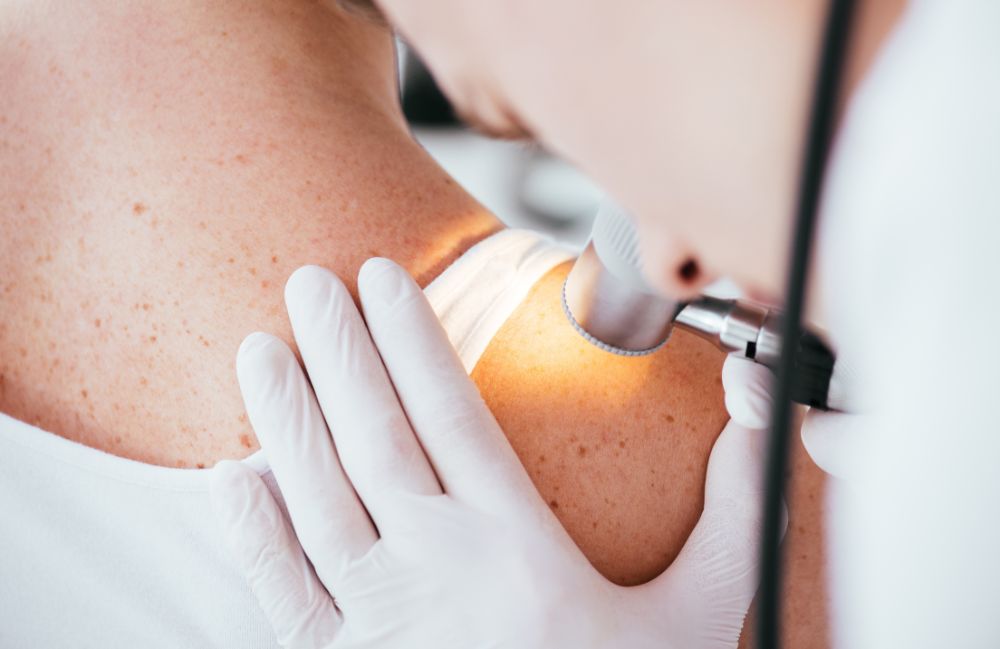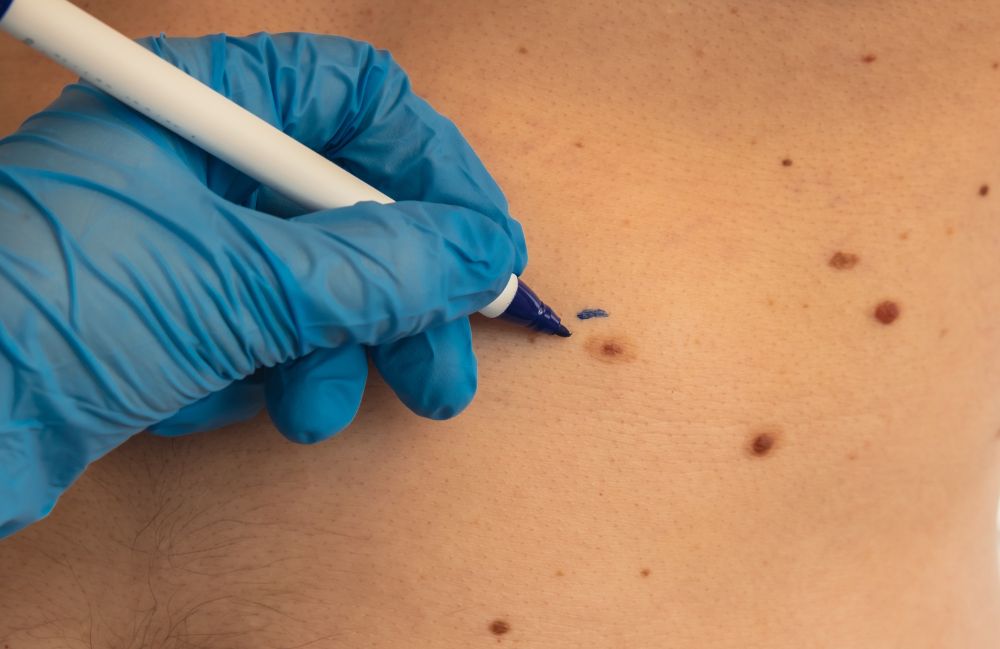
Melanoma is the most serious form of skin cancer, developing in melanocytes, the skin cells responsible for producing melanin (pigment). While it represents a smaller percentage of skin cancer cases, it is responsible for the majority of skin cancer-related deaths due to its ability to spread to other organs if not detected early.
At Metropolis Dermatology in Costa Mesa, CA, we offer comprehensive melanoma screenings, diagnostic services, and advanced treatment options to help detect and manage this aggressive skin cancer as early as possible.
What is Melanoma?
Melanoma is a type of skin cancer that forms in melanocytes, the pigment-producing cells. While it can develop anywhere on the body, it is most frequently found on sun-exposed areas, including the face, back, arms, and legs.
In its early stages, melanoma may appear as a new, irregular mole or a dark spot that looks different from other moles. If left untreated, melanoma can penetrate deeper skin layers and spread to lymph nodes and internal organs, making early detection critical.
What Are the Causes of Melanoma?
The primary cause of melanoma is DNA damage from ultraviolet (UV) radiation, which leads to abnormal cell growth. This can result from exposure to natural sunlight or artificial UV sources like tanning beds.
Risk Factors
- Fair skin and a history of sunburns: Individuals with lighter skin tones, freckles, and a tendency to burn easily are at a higher risk.
- Excessive sun exposure: Unprotected time in the sun or frequent tanning bed use increases the likelihood of melanoma.
- Family history: A genetic predisposition to melanoma or other skin cancers raises the risk.
- High number of moles: Having many moles or atypical (dysplastic) moles can increase susceptibility.
- Weakened immune system: Individuals with compromised immune function are more vulnerable to developing melanoma.
What Are the Symptoms of Melanoma?
The ABCDE rule is a useful guide for identifying potential melanoma:
- Asymmetry: One half of the mole does not match the other.
- Border irregularity: Edges appear uneven, jagged, or poorly defined.
- Color variation: Multiple shades of brown, black, red, or even blue within one mole.
- Diameter: Larger than 6mm (about the size of a pencil eraser).
- Evolving: Any change in size, shape, color, or texture over time.
Other warning signs include new growths, changes in existing moles, or sores that do not heal. If you notice any of these signs, immediate evaluation by a dermatologist is recommended.
What Are the Possible Treatments?
At Metropolis Dermatology in Costa Mesa, melanoma treatment is personalized based on the stage of cancer and overall health of the patient.
Common Treatment Approaches
- Surgical Excision: The primary treatment for early-stage melanoma, where the affected area and a margin of healthy skin are removed.
- Lymph Node Biopsy: Performed to determine if the cancer has spread beyond the skin.
- Radiation Therapy: Used in more advanced cases to shrink tumors or target remaining cancer cells.
- Targeted Therapy: Designed to attack specific genetic mutations in melanoma cells, slowing or stopping cancer growth.
Early-stage melanoma has a high cure rate with surgical removal, while advanced cases may require a combination of treatments.

FAQs
Is melanoma always caused by sun exposure?
While UV exposure is a major risk factor, melanoma can also develop in areas not frequently exposed to the sun, such as the soles of the feet, under the nails, or inside the mouth.
How can I reduce my risk of melanoma?
- Apply broad-spectrum sunscreen (SPF 30 or higher) daily.
- Avoid tanning beds and excessive UV exposure.
- Perform regular skin self-examinations for new or changing moles.
Is melanoma curable?
Melanoma is highly treatable when caught early. However, once it spreads to other organs, treatment becomes more complex.
How often should I have my skin checked?
An annual skin cancer screening is recommended, especially for individuals with a history of sun exposure, previous melanoma, or multiple risk factors.
What happens after melanoma treatment?
Regular follow-up appointments and skin monitoring are necessary to detect recurrence or new melanomas early.
Hear from
Real Patients

Schedule Your Consultation Today!
Early diagnosis is the most effective way to prevent melanoma from spreading. At Metropolis Dermatology in Costa Mesa, CA, we provide comprehensive skin exams, advanced diagnostics, and personalized treatment plans to help patients manage and prevent skin cancer. Schedule your melanoma screening today to protect your skin and health!
